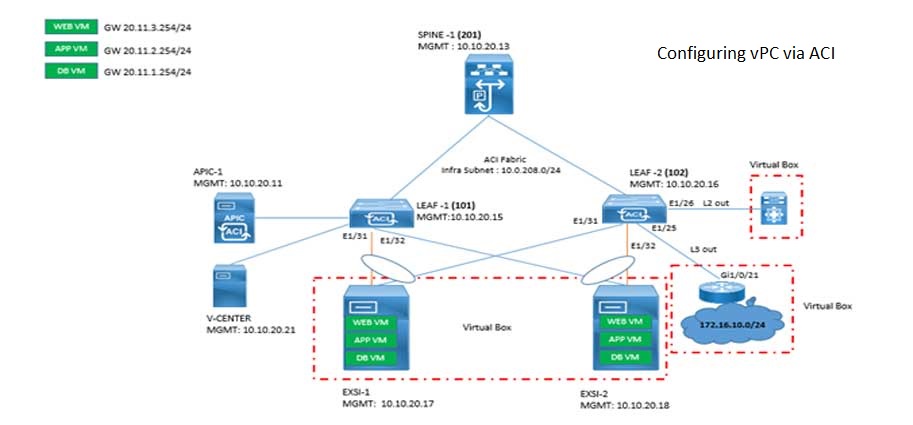
Cisco Nexus switches and Cisco ACI switches are both products offered by Cisco, but they have some significant differences in terms of their architecture, functionality, and use cases. Before understanding the difference between Cisco Nexus and ACI it is important to understand the difference in their hardware architecture and components
Cisco Nexus Switch Hardware:
Cisco Nexus switches are modular switches that consist of several components including
1. Supervisor module: This is the main processing unit of the switch and is responsible for managing the switch and all the line cards. It provides redundancy and can be replaced or upgraded without disrupting the network.
2. Line cards: These are the interface modules that connect to the network devices, servers, and storage. There are various types of line cards, including Ethernet line cards, Fibre Channel line cards, and Unified Port Controllers (UPCs).
3. Power supplies: These provide power to the switch and the line cards. Cisco Nexus switches usually have redundant power supplies for high availability.
4. Fans: These provide cooling for the switch and the line cards. They are also redundant for high availability.
5. Chassis: This is the physical frame that holds all the components together. It can be a fixed or modular design.
Examples of Cisco Nexus switches are 7k, 5k and 2k series of switches
Cisco ACI Switch Hardware:
Cisco ACI switches use ACI framework and they have a different hardware architecture than Cisco Nexus switches. The main components of Cisco ACI switches are
1. Application Policy Infrastructure Controller (APIC): This is the central point of control for the entire ACI fabric. It provides policy-based automation, management, and monitoring of the network.
2. Spine switches: These are high-speed switches that provide connectivity between the leaf switches and the APIC.
3. Leaf switches: These switches provide connectivity to the end devices, such as servers and storage, and they also connect to the spine switches.
4. Fabric Extenders (FEX): These are optional components that can be used to extend the leaf switch ports to the end devices.
5. Power supplies and fans: These provide power and cooling for the switches.
Examples of Cisco ACI supported switches are 8k, 9k etc. series of switches.
Now you know the hardware architectural difference between Cisco Nexus and ACI switches, there are other functional difference between these switches are as follows. It is also important to know that the Cisco Nexus market is decline since the invent of Cisco ACI switches as they are more flexible, scalable and provides greater automation capabilities.
Architecture Brief:
The architecture of Cisco Nexus switches is based on a traditional switching model, which consists of a switch fabric, a supervisor module, and line cards. The switch fabric provides a high-speed interconnect between the supervisor and line cards, while the supervisor module is responsible for managing the switch and the line cards.
Cisco ACI switches are a part of software-defined networking (SDN) solution that has flexibility and automation in network management. These switches support Cisco's Application Centric Infrastructure (ACI) which is a policy-based framework for managing and automating data center networks.
Functionality:
Cisco Nexus switches are primarily used in data center where these switches provide high port speed connectivity to other devices and servers. They also have advanced features likes virtualization, quality of service (QoS) and security. For these switches Cisco has come up with a wide range of protocols which can be configured to support different vendor solutions.
However, Cisco ACI switches are based on ACI framework. They provide policy-based automation, centralized management, and visibility into the network. They are also optimized for cloud environments and provide seamless integration with cloud orchestration platforms.
Use Cases:
Cisco Nexus switches are ideal for use in data center environments where high-speed connectivity and advanced features are required. They are commonly used in.
1. Enterprise data centers
2. Service provider networks
3. Cloud environments
Cisco ACI switches are ideal for organizations that require policy-based automation and centralized management of their data center networks. They are commonly used in large-scale data center environments, especially those that have a high degree of automation and require seamless integration with cloud platforms.
In summary, Cisco Nexus switches and Cisco ACI switches have different architectures, functionality, and use cases. Cisco Nexus switches are traditional switches that provide high-speed connectivity and advanced features, while Cisco ACI switches are optimized for use with Cisco's ACI framework and provide policy-based automation and centralized management.
Related Articles:
What is Cisco ACI in Networking
Comments (0)
Categories
Popular posts


Cisco Nexus Port Channel: Configuring ...
6 May 2024
Configure Rapid PVST on Cisco Nexus
26 Apr 2024
Palo Alto Exam Cost: PCNSA, PCNSE & More
27 Apr 2024
Cisco ACI VPC Configuration Task Steps
28 Apr 2024Recent posts

CCNP Enterprise Certification Details
11 May 2024
What is OSPF and How it Works?
11 May 2024
OSPF MD5 Authentication: Securing OSPF
11 May 2024
BGP Authentication and Troubleshooting
11 May 2024



